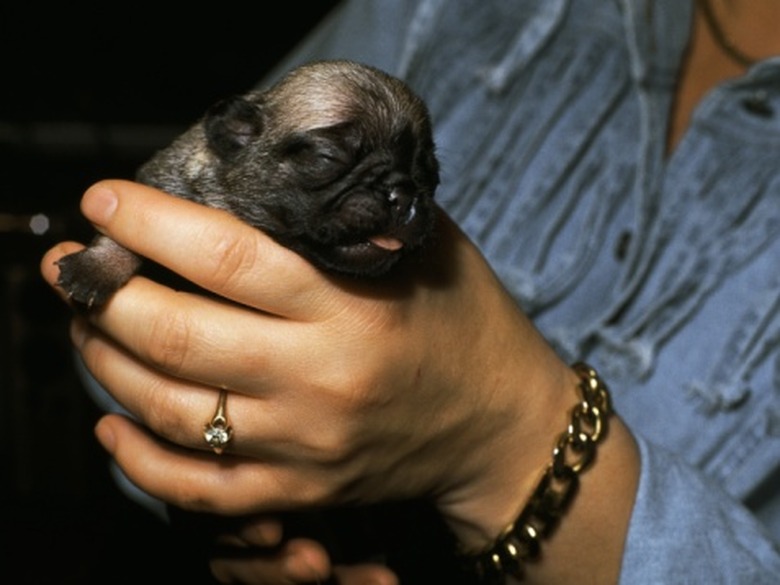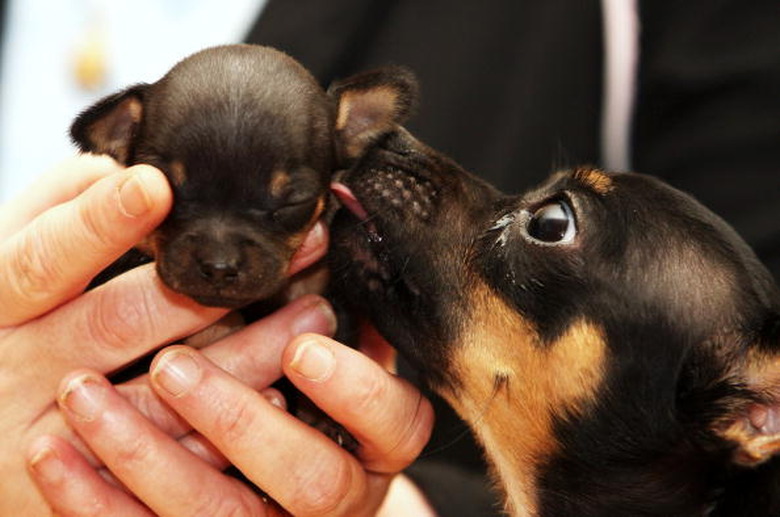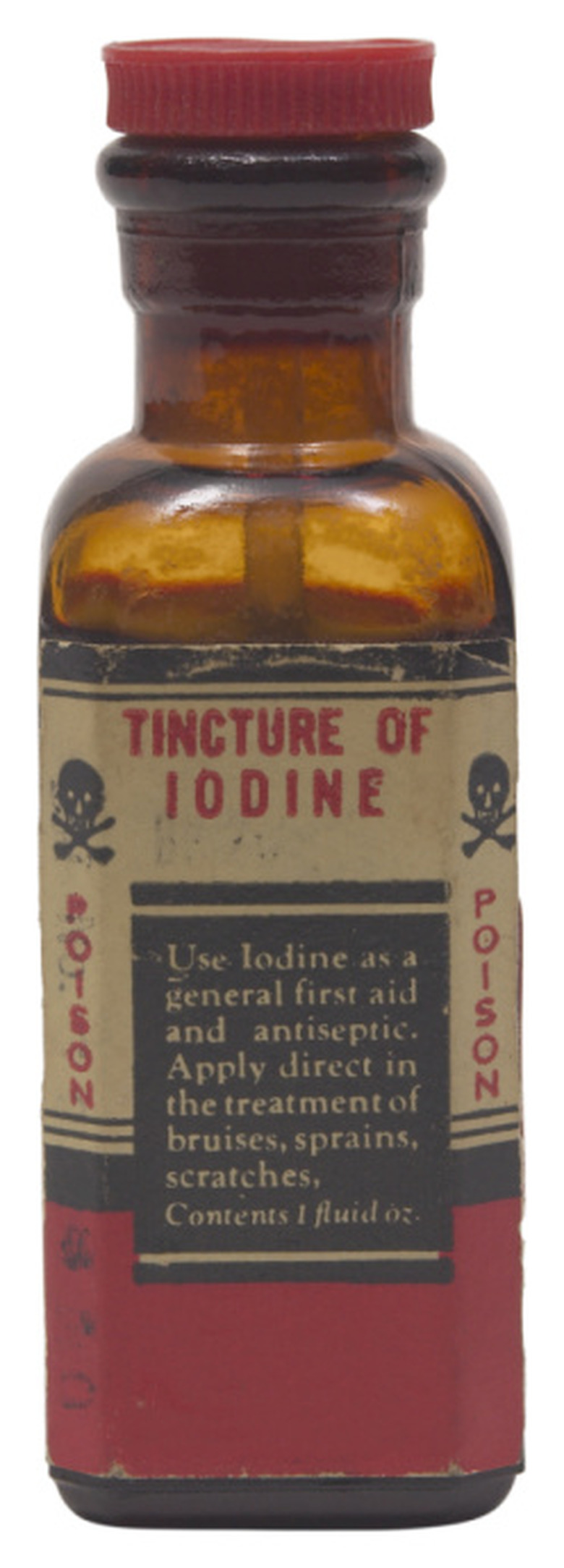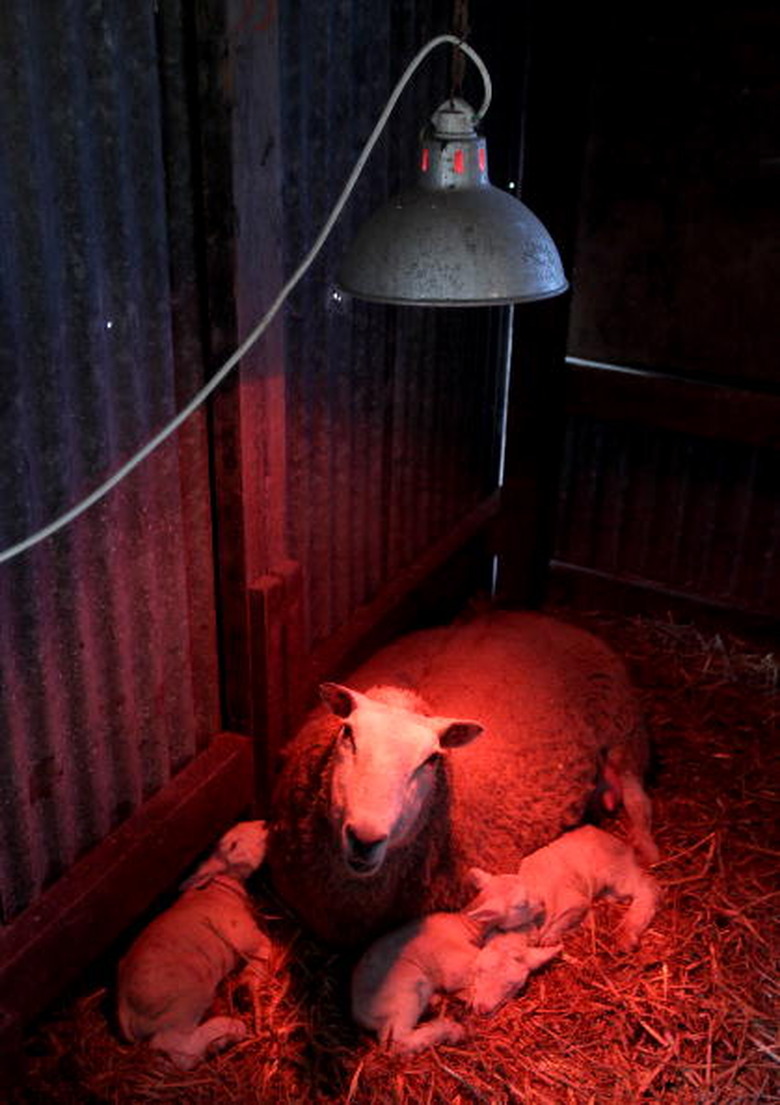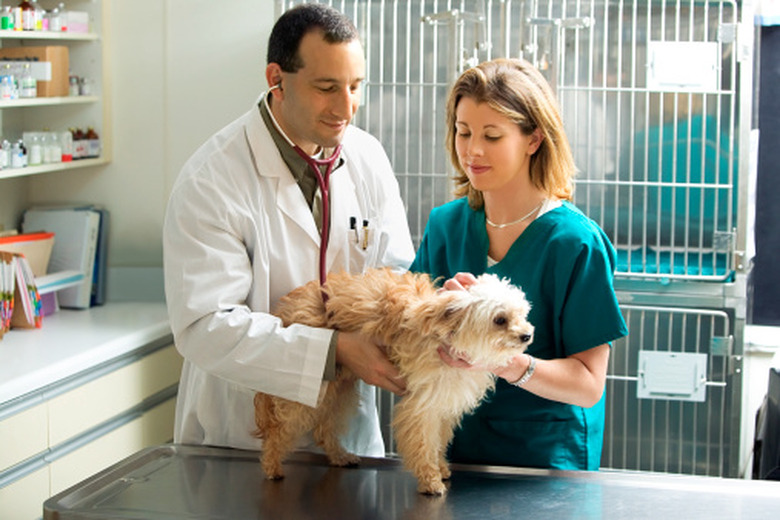How To Save A New Born Puppy
Things Needed
-
Nasal aspirator for infants (bulb syringe)
-
Clean dry towels
-
Cotton swab
-
Iodine, 2%
-
Heat lamp
-
Room thermometer
-
Bottle
-
Nipples
-
Puppy formula
Warning
Call the veterinarian before taking newborns or mother in, so that they can protect them from contact with ill animals when you arrive. If the mother is in labor with no puppy being born (no matter how many have already been born) for four hours or more, contact the veterinarian. If a puppy is stuck in the birth canal and you cannot reach it to help it out, contact the veterinarian. A puppy that stays too long in the womb or in the birth canal will die, and probably cause the ones behind it to die as well. Don't feel guilty if the puppy doesn't survive. If you do everything in your power, it still won't always be enough, but you can take comfort in the fact that you were prepared and did your best to help the puppy.
Tip
Some people try mouth-to-mouth resuscitation if the puppy doesn't start to breathe. This can work, if you are willing, but it doesn't always work. If you decide to try it, cover the puppy's mouth and nose with your mouth, and breathe in short puffs of air.
The excitement of newborn puppies can fade quickly if one or more of the puppies does not breathe on its own or seems ill. Some puppies have severe congenital problems that you can't see, but others are just a little weaker and need a boost. Be prepared before the birthing begins, because every hour counts when treating newborn puppies. Know your breed. Some breeds tend to need a Cesarean section almost always, and it's best to have the veterinarian in on the planning. Other breeds are susceptible to specific delivery problems. Discuss the breeding, pregnancy and delivery with the veterinarian beforehand, if at all possible.
Step 1
Pull the sac off the puppy immediately if the mother dog is not doing it or is having trouble getting it off. The puppy can't breathe until the sac is off and its lungs are clear, so pull the sac from the face first. Use the aspirator to gently suck any mucus and fluids from the puppy's nose, mouth and throat. If the puppy is breathing and appears healthy, give it back to its mom for cleaning and nursing. Help each puppy nurse in the first half hour of birth, if possible. The colostrum in the milk is only available for a short time and it is extremely important to the puppy's health, but if the puppy is not breathing, go to step 2.
Step 2
Wrap the puppy in a clean, dry towel and cradle it in both hands; cup the hands around the puppy and towel. The puppy's head should be closest to your fingertips. Raise your hand to about the level of your neck, and firmly swing your arms down toward your knees. Make certain the puppy's body, neck and head are firmly supported in your hands. This procedure can help dislodge any fluid or mucus that is still in the puppy's chest and throat.
Step 3
Wipe the puppy, head to toe, with a clean, dry towel, if it still isn't breathing or the mom isn't cleaning it. Use a quick back-and-forth rubbing motion to gently stimulate the puppy. Allow the mother to lick the puppy if she is interested. Dogs react differently when their newborn puppies aren't well; some will try for hours to save the baby, and others will push it away. When a baby is in trouble, you have to take over and help it, but don't leave the mom out completely.
Step 4
Swab the iodine on the puppy's umbilical stump. This will help prevent infection, which spreads very quickly in newborn puppies. Continue to swab the area with iodine twice daily for the first week, then once daily thereafter.
Step 5
Keep the area quiet and do not allow others in the room except people needed to care for mom and pups. Mother dogs get nervous if there is too much traffic and noise, and that can affect both the quality and quantity of the milk, slow down delivery and interfere with maternal instincts. The mother that is excessive in her care of the puppies can end up injuring or killing the pup, even though she is trying to care for it. Other mothers may ignore the puppies completely.
Step 6
Use a heat lamp at all times. The room temperature for even normal, healthy newborn puppies should be about 84 to 86 degrees Fahrenheit, which is hard to maintain for the average home. Use the heat lamp and thermometer to maintain the appropriate temperature for the puppies. Do not let the lamp get too close to the puppies or they may be burned. If the lamp is too far away, it won't keep them warm enough. The thermometer can guide you regarding placement, so keep it in the box, near the puppies. Puppies cannot regulate their body temperature for the first few weeks, and hypothermia can contribute to the puppy's refusal to nurse and other causes of death in newborn puppies.
Step 7
Take the puppy to a veterinarian if you are able to revive the puppy but it continues to show signs of decline, such as low body temperature, difficulty breathing, lethargy or difficulty nursing when compared to the other puppies. There is very little time when treating a sick newborn, as infections quickly become system-wide and overwhelm the tiny body. Nevertheless, sometimes the veterinarian can help you save a newborn puppy.
Step 8
Supplement a weaker puppy's nursing by giving it extra help to latch onto the nipple and giving it extra, private nursing sessions with mom. If it still seems to have trouble nursing, then you can supplement it with bottle feedings of puppy formula. Talk to the veterinarian about the best kind of formula and the best kind of nipple; packaged puppy bottles and nipples do not work well for all puppies.
Step 9
Make sure the mother receives proper nutrition and health care. Talk to the veterinarian if you have any doubts or questions about how much the mother should eat, or the best type of food for a nursing mother. If the mother seems ill, take her to the veterinarian immediately, as a mild illness in adult dogs can kill newborn puppies in a matter of hours.
Always check with your veterinarian before changing your pet's diet, medication, or physical activity routines. This information is not a substitute for a vet's opinion.
References
- Merck Veterinary Manual; Management of the Neonate; Immediate Postpartum Care
- Merck Veterinary Manual; Management of the Neonate; Immediate Postpartum Care
- The Merck Veterinary Manual; Management of Reproduction; Postpartum Care
- The Merck Veterinary Manual; Management of Reproduction; Periparturient Problems
